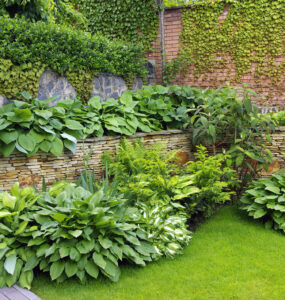
Combating Nature Deficit Disorder
By Rob Sproule
Kids are spending less time in nature. We could argue about causes, whether it’s too much screen time, fear about getting hurt or heavily scheduled extra-curricular time, but at the end of the day many kids spend less than an hour a week playing outside.
Nature Deficit Disorder (NDD) was coined by Richard Louv in his seminal 2005 book Last Child in the Woods. While not a recognized medical diagnosis, NDD has become a touchpoint for people concerned about everything from childhood obesity to ADD. It comes from kids not having the time that they need to discover and engage with nature in their own pace.
I’ve wanted to write about NDD for years, but have resisted because I don’t want to lecture anyone on how to raise their kids. There’s far too much out there telling us what’s wrong with our kids and not enough suggesting realistic ways to help them.
What is NDD?
Nature Deficit Disorder happens when kids can’t engage with nature on their own terms. It’s important to note that sometimes kids can be outside but, if the activity is to rushed or structured that they don’t have time to really engage, it doesn’t count as engaging play.
Kids want to be in nature. They want to poke at fungus, chase squirrels and get dirty (very dirty). Engaging in nature builds their creativity, confidence, resourcefulness, attention span, fitness, immune system, and much, much more. The only downside is an extra load of laundry.
Practical Solutions
I have 2 small kids and an intense work schedule. I know how hard it is to move at warp speed all day and then slow to half impulse when I get home (that’s the Trekkie in me coming out). But my kids are discovering their world for the first time, and as soon as I slow down enough to see the look in their eyes at pulling a dirty carrot out of the ground or collecting pine cones, I remember that wonder happens at its own pace.
We live in the best country in the world, and wherever you are I’ll bet there a patch of nature, whether a park, trail or overgrown perennial bed, within 5 minutes. If we take our kids there, with no scheduled activities, and follow them around seeing the world from their poetic gaze, they will teach us about wonder.
Whether you have a full sized yard or just a balcony, you can engage your child by gardening. Sow some lettuce and carrot seeds in the soil and empower him or her to take care of the plants. They can water, watch the seeds transform, and harvest /eat the fruits of their labour.
Go hiking!
It’s easy for a walk in the woods to be just that: a walk. The next time you walk down a nature path, encourage dawdling. Ask your children to find mushrooms, different shapes of leaves, and birds high in the canopy. Let them lead. If you only get 30 feet before you have to go back to the car, then it will have been a memorable, discovery filled 30 feet for your kids.
Give them a disposable camera (or your smart phone) to take pictures of things in nature. Encourage them to snap a photo of what they find interesting; make it a fun exploring game and they’ll dive in. When you get home, they can look up fungi, trees and birds they saw in a book and learn more about it.
Connecting your kids with nature doesn’t have to be fancy, it just needs to follow their schedule. It’s up to us to get past our daily stress in order to give them space to let wonder happen.















